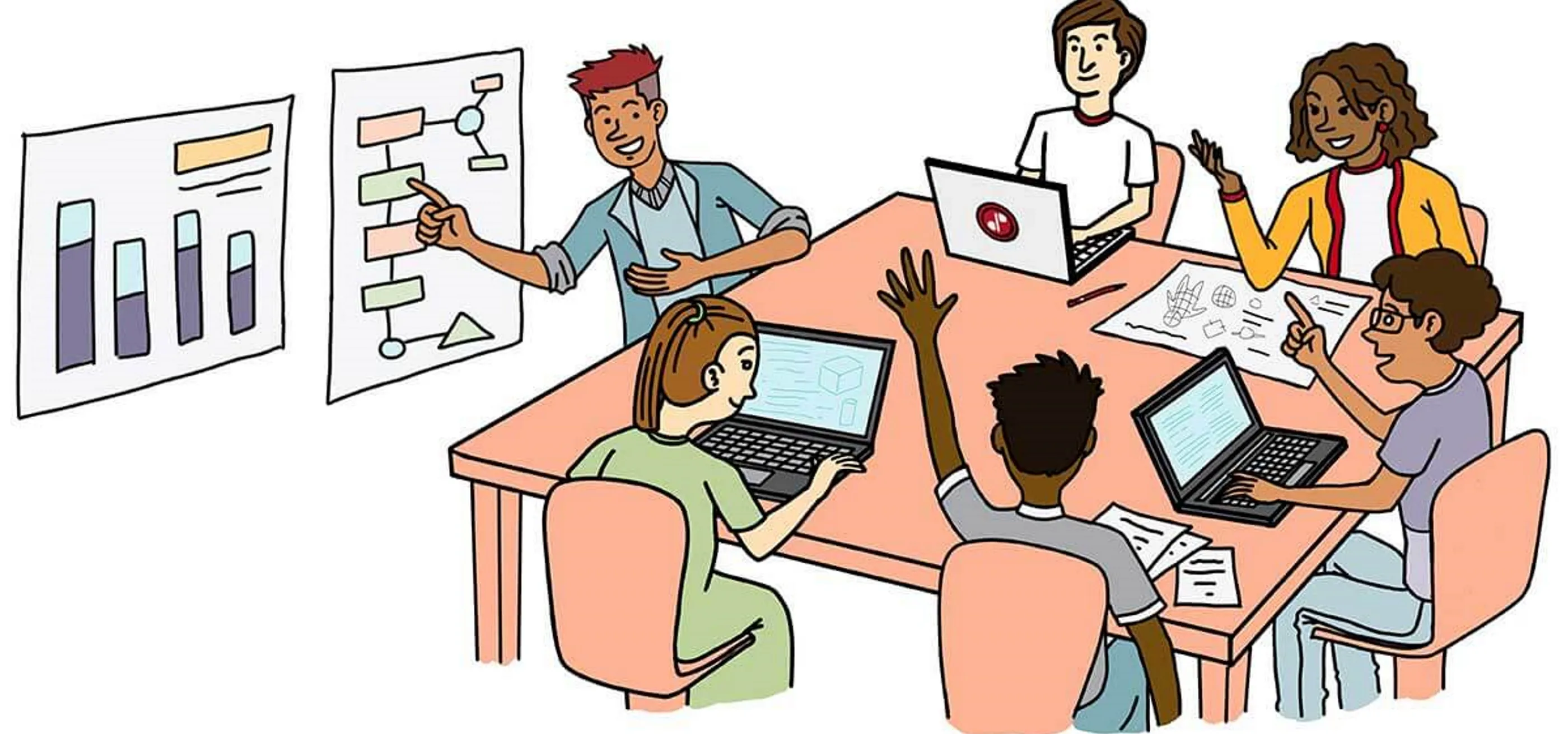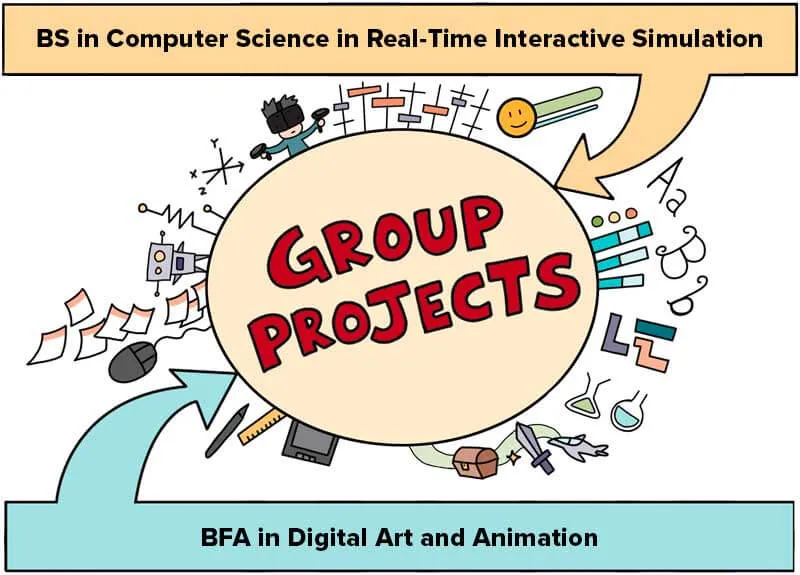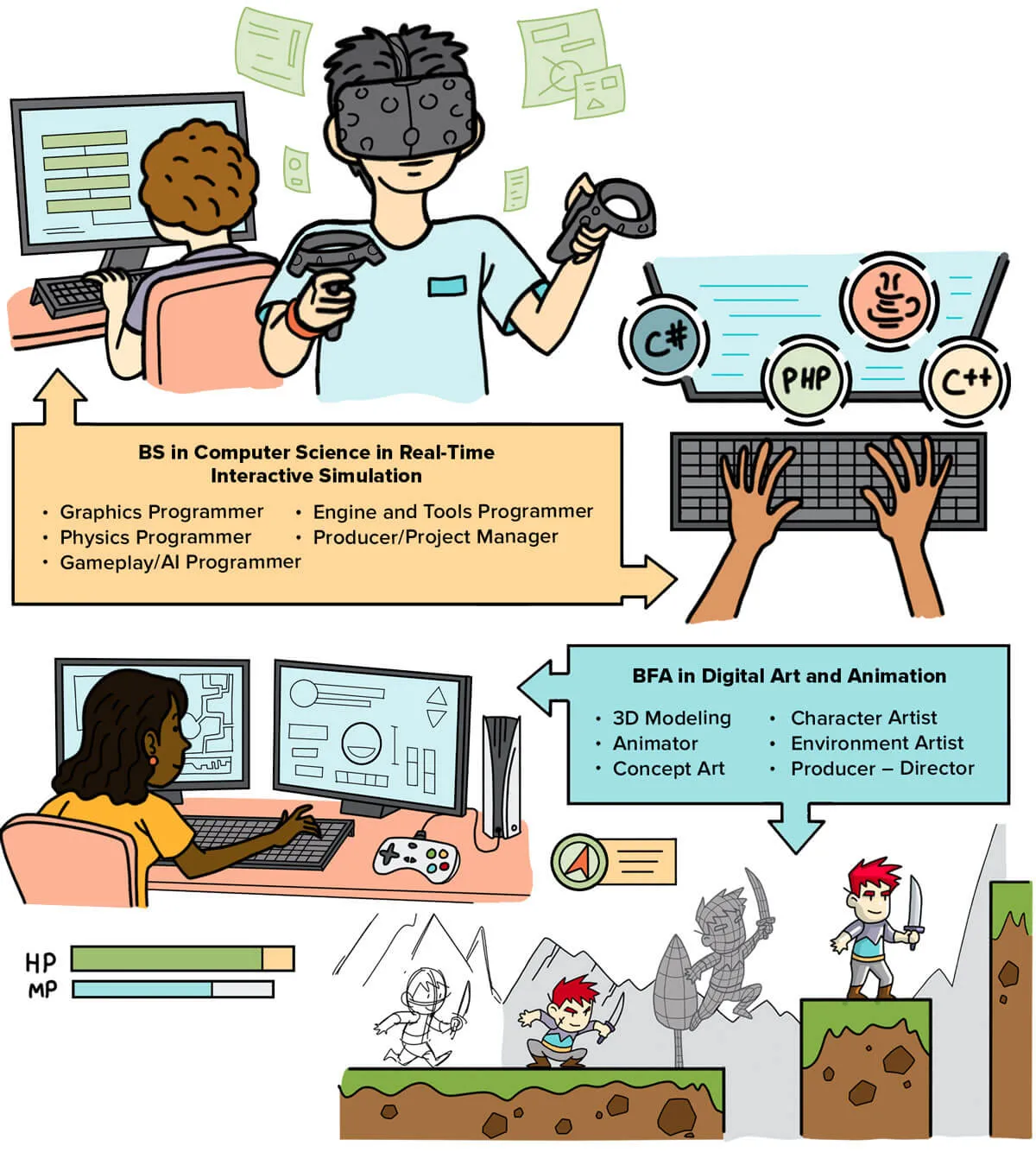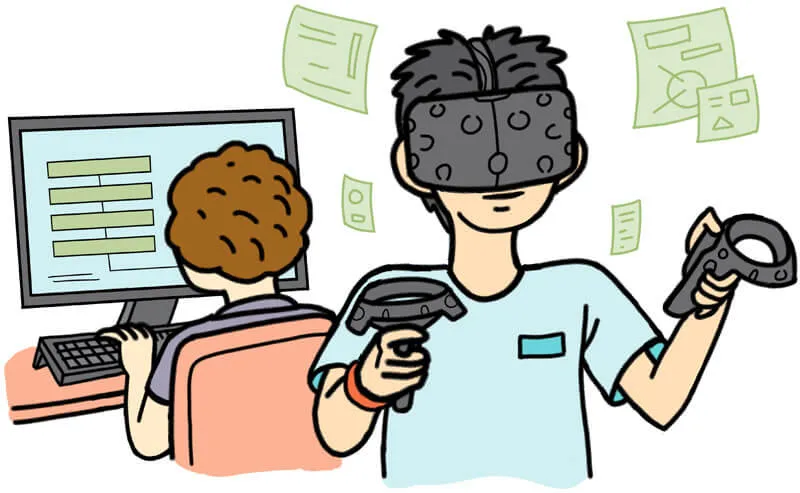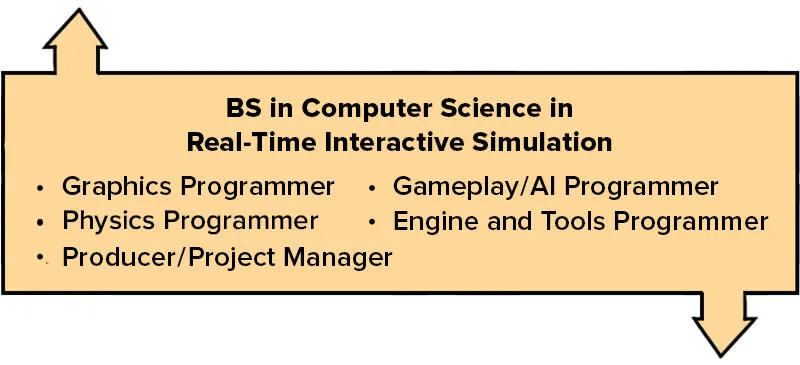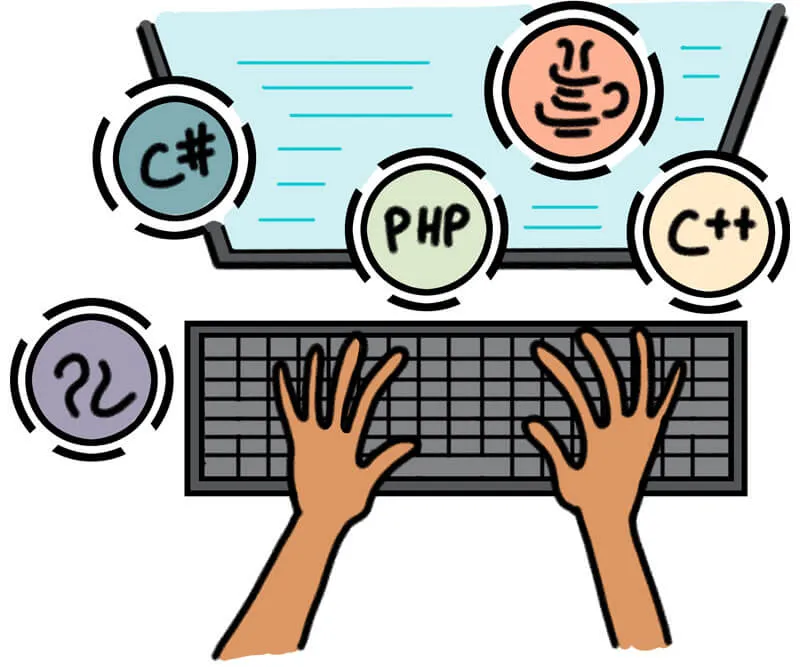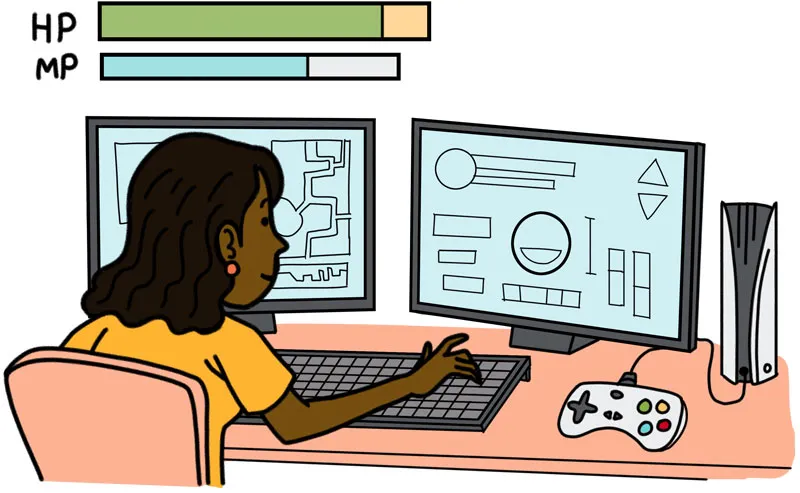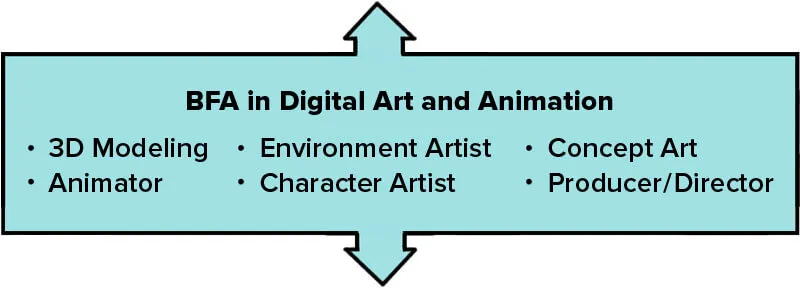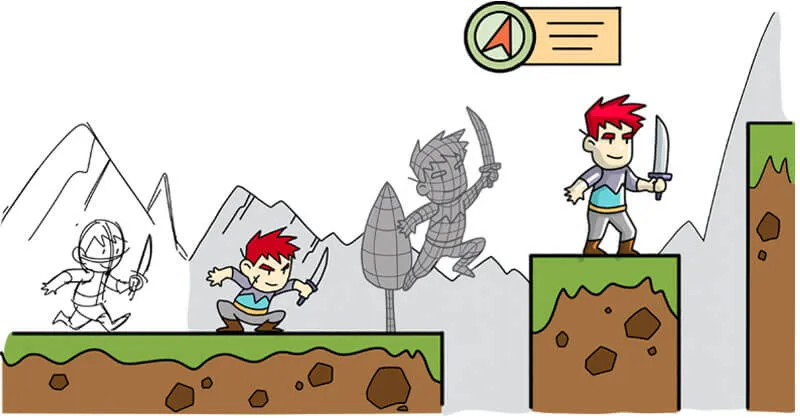DigiPen Europe-Bilbao’s multidisciplinary projects equip students with strong technical knowledge and practical soft skills.
Throughout their academic journey, students from both of DigiPen Europe-Bilbao’s degree programs come together to work on common group projects.
The act of collaborating brings people together, fosters connections, strengthens the sense of community, and facilitates the sharing of knowledge among peers.
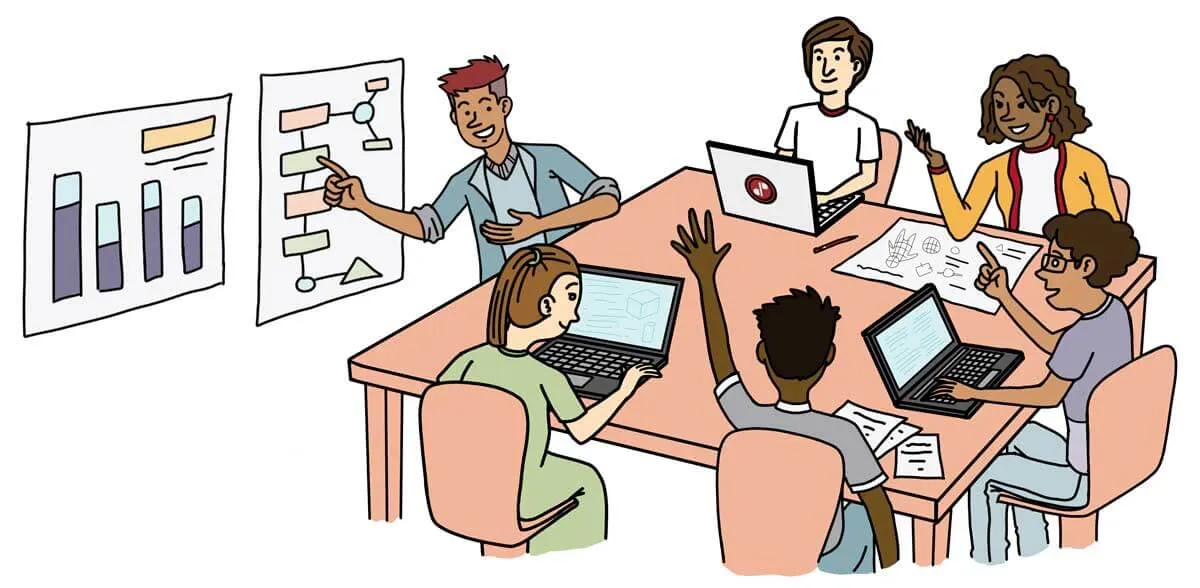
Students from the art program work together on visual design, the art pipeline, and more to create student films.
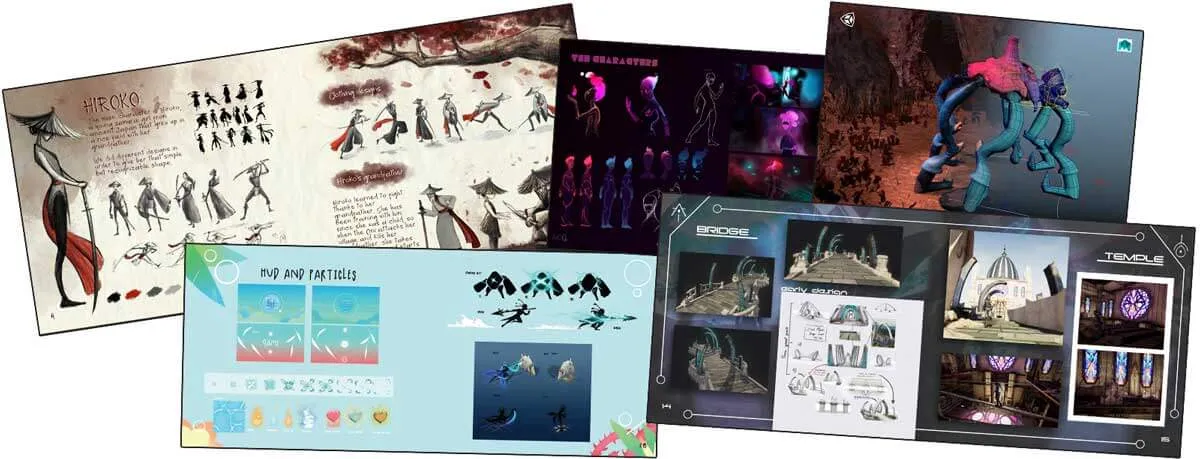
Meanwhile, students from the computer science program collaborate to create a game or an interactive simulation from scratch.
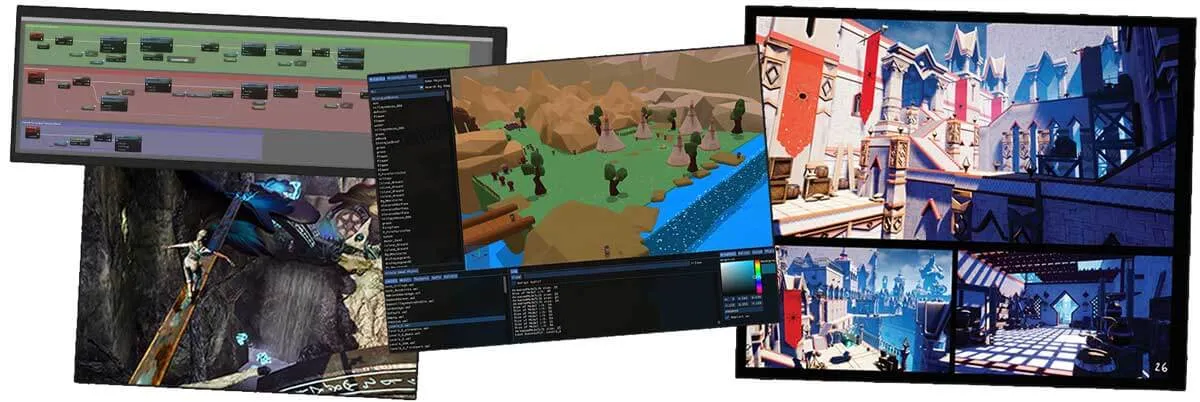
These multidisciplinary game projects bring together years of each student’s shared expertise into a project that combines the best of both worlds.
These project classes are compulsory, high credit-bearing modules.
Learning to work with peers from different disciplines simulates the real world and gives students a taste of what to expect when they enter the industry.
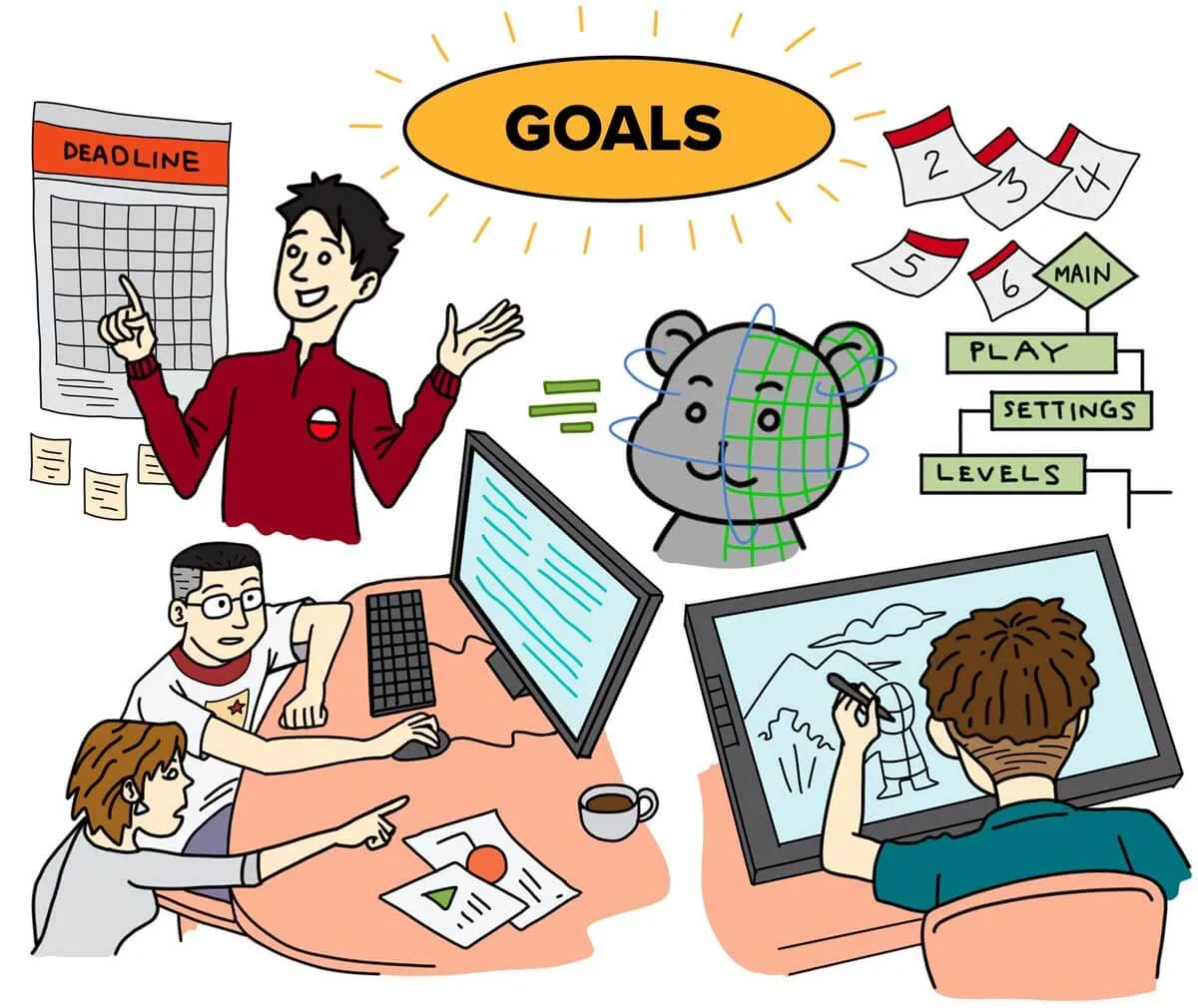
For example, artists must talk to software developers to understand technical limitations and optimize their art accordingly to prevent crashes.
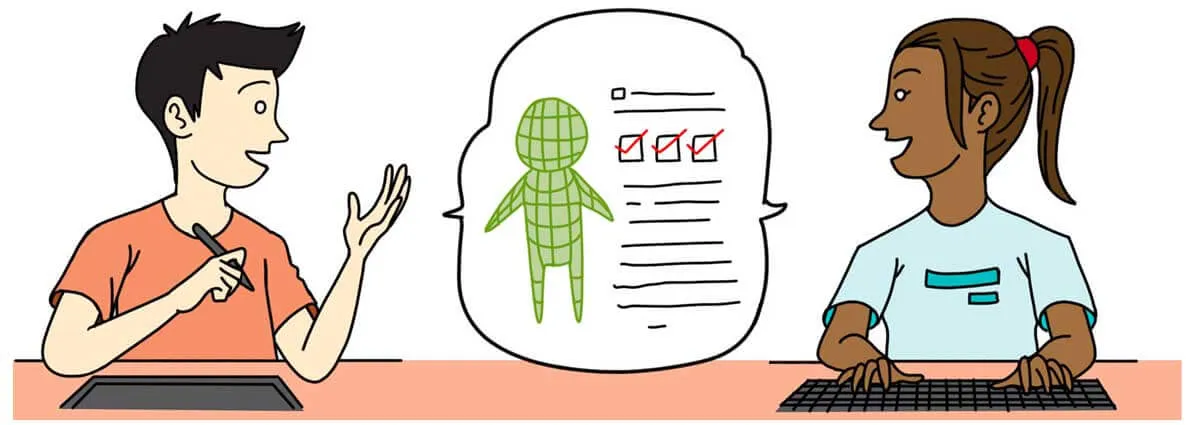
From their second year, students from each program contribute their individual expertise in computer science, design, and art to create a professional-quality game or simulation together.
While working on these projects, students from the different degree programs generally assume the following types of roles within the teams.
Students also learn project management skills such as the Scrum framework and Agile software development techniques that help them work collaboratively and effectively.
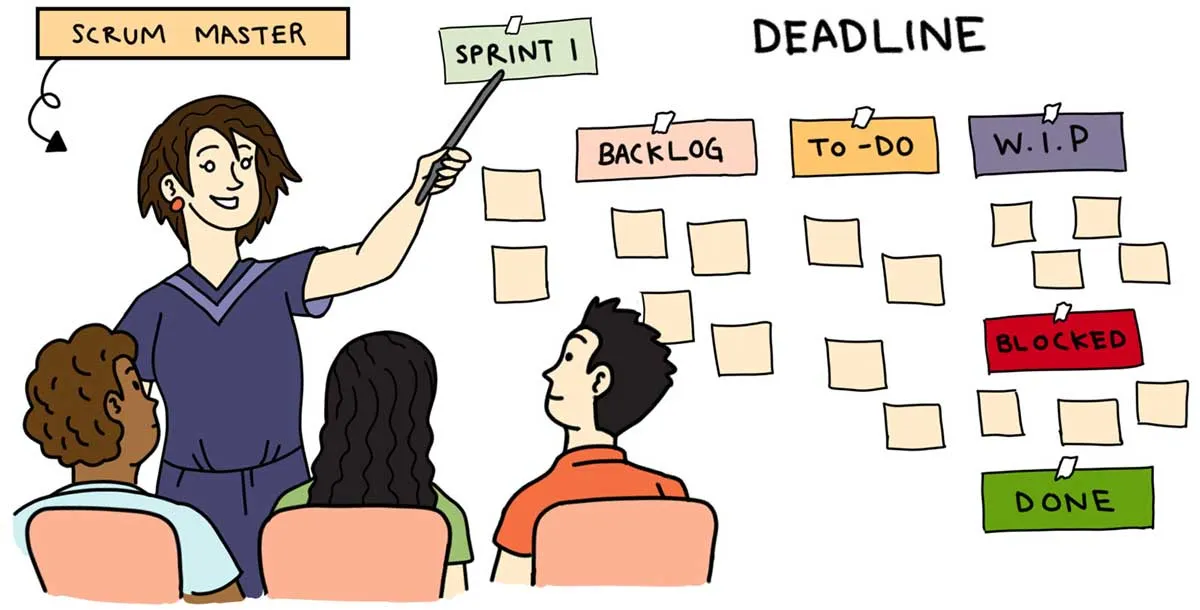
Additionally, students have ample opportunities to work on their presentation skills, as there are at least three presentations per semester for every project class.
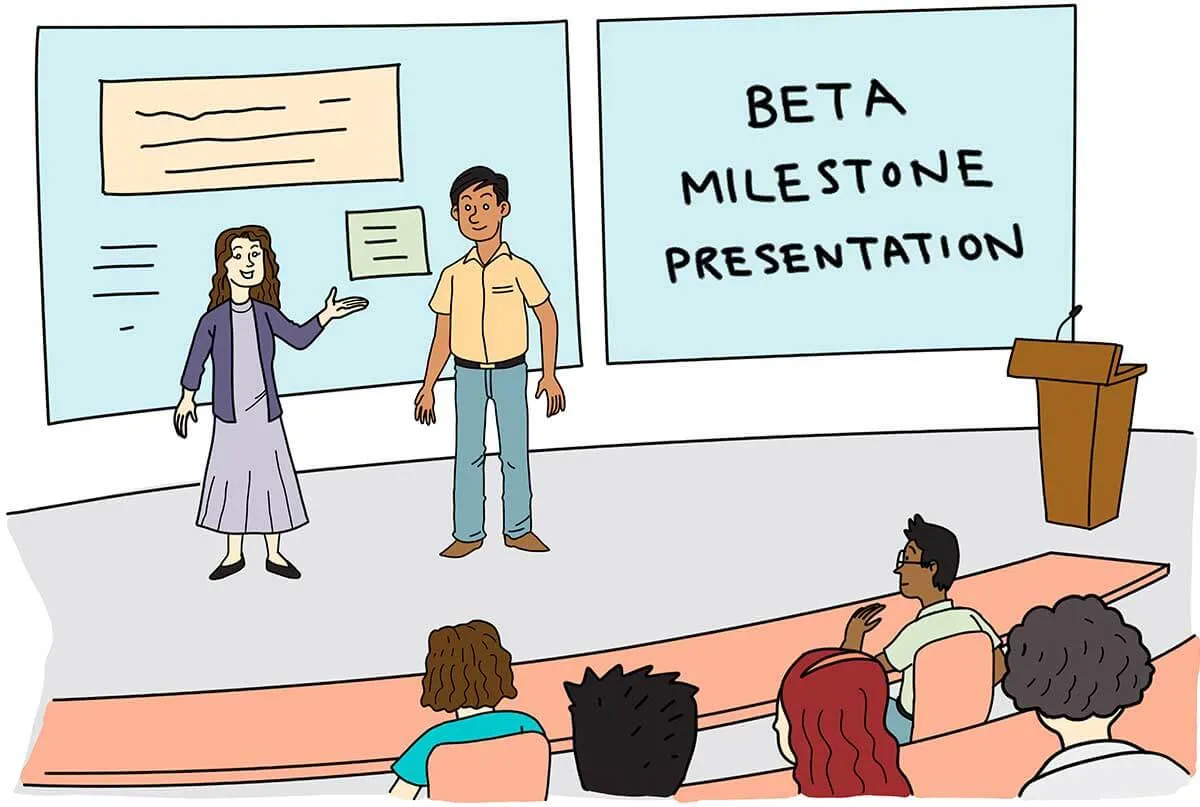
As you can see, DigiPen Europe-Bilbao’s multidisciplinary project collaborations are a core part of our unique curriculum that trains every student to be industry ready.
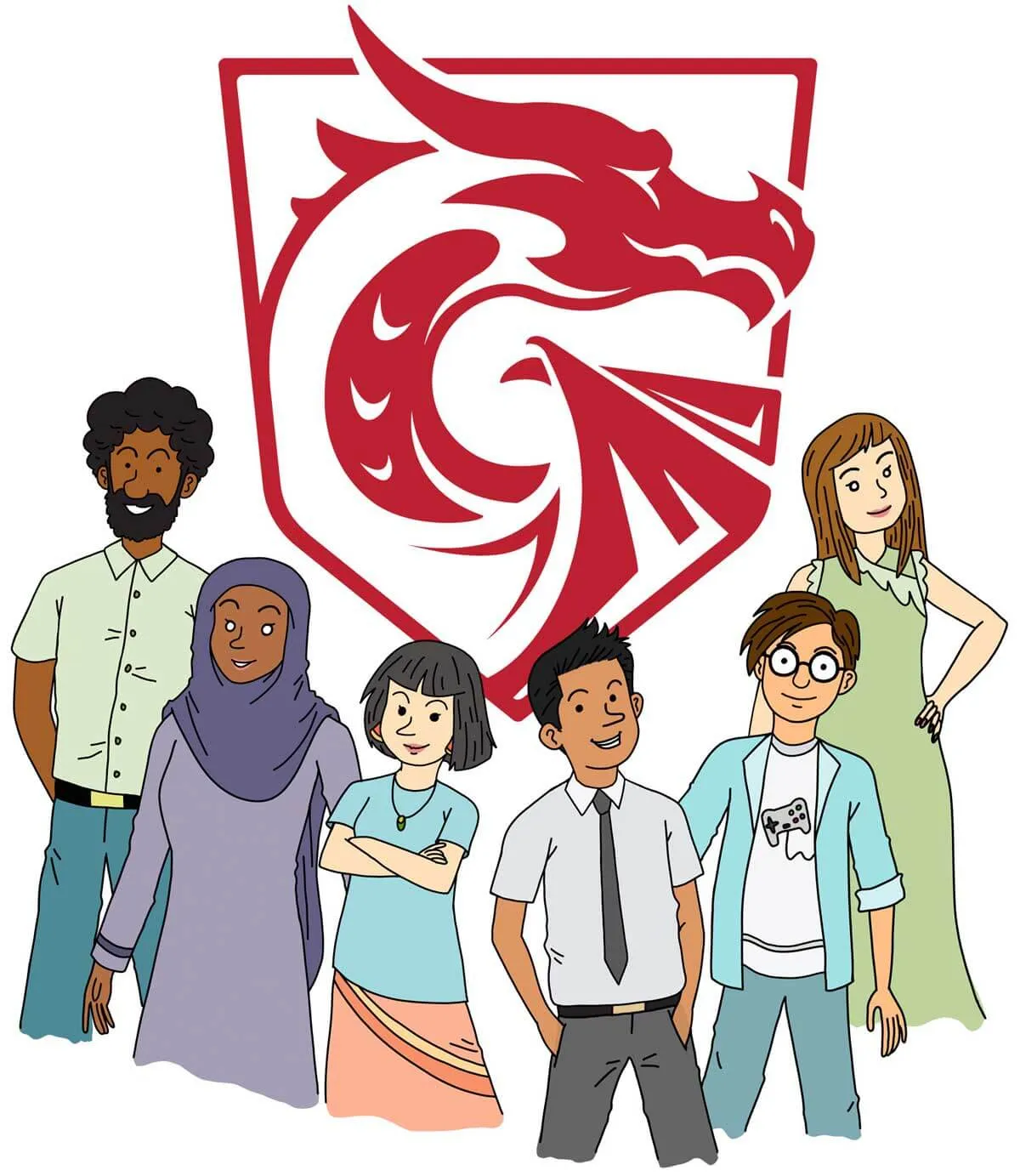
By the time DigiPen Europe-Bilbao students graduate, they will be confident innovators in technology, with skills that are relevant for the digital economy.
Find out more about DigiPen Europe-Bilbao’s degree programs!
